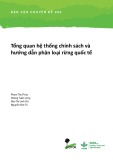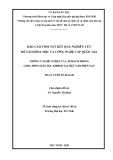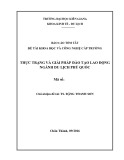
The SK-N-MC cell line expresses an orexin binding site
different from recombinant orexin 1-type receptor
Heike A. Wieland
1,
*, Richard M. So¨ll
2,3
, Henri N. Doods
1
, Dirk Stenkamp
1
, Rudolf Hurnaus
1
,
Ba¨ rbel La¨ mmle
1
and Annette G. Beck-Sickinger
2
1
Division of Preclinical Research, Boehringer Ingelheim Pharma KG, Biberach, Germany;
2
Institute of Biochemistry,
University of Leipzig, Germany;
3
Department of Applied Biosciences, Swiss Federal Institute of Technology, Zurich, Switzerland
Orexin A and B (also known as hypocretins), two recently
discovered neuropeptides, play an important role in food
intake, sleep/wake cycle and neuroendocrine functions.
Orexins are endogenous ligands of two G-protein-coupled
receptors, termed OX
1
and OX
2
. This work presents the first
short orexin A and B analogues, orexin A 23–33 and orexin
B 18–28, with high affinity (119 ± 49 and 49 ± 23 n
M
)for
OX
1
receptors expressed on SK-N-MC cells and indicates
the importance of the C-terminal part of the orexin peptides
for this ligand–receptor interaction. However, these C-ter-
minal fragments of orexin did not displace the
125
I-labelled orexin B from the recombinant orexin 1
receptor stably expressed in Chinese hamster ovary cells. To
examine the role of the shortened orexin A 23–33 in feeding,
its effects in mimicking or antagonizing the effects of orexin
A were studied in rats after administration via the lateral
hypothalamus. In contrast with orexin A, which potently
induced feeding up to 4 h after administration, orexin A
23–33 neither induced feeding nor inhibited orexin
A-induced feeding. Modafinil (VigilÒ), which was shown
earlier to activate orexin neurons, displayed binding neither
to the orexin receptor expressed on SK-N-MC cells nor to
the recombinant orexin 1 receptor, which indicates that
modafinil displays its antinarcoleptic action via another yet
unknown mechanism. PCR and subsequent sequencing
revealed expression of the full-length orexin 1 receptor
mRNA in SK-N-MC and NT-2 cells. Interestingly,
sequencing of several cDNA clones derived from RNA of
both SK-N-MC and NT-2 cells differed from the published
nucleotide sequence at position 1375. Amino acid prediction
of this AfiG change results in an isoleucinefivaline sub-
stitution at the protein level, which may provide evidence for
an editing process.
Keywords: food intake; hypocretin; ligand–receptor inter-
action; obesity; orexin.
Two novel neuropeptides, orexin A and B, were recently
discovered independently by two groups and identified as
potent stimulators of food intake after intracerebroventric-
ular administration [1–4]. Further investigations revealed a
broad involvement of these peptides in the regulation of
many physiological and behavioural activities that are
associated with feeding behaviour [4–7], in the modulation
of neuroendocrine function and the sleep/wake cycle
[8–12]. Both peptide amides derive from prepro-orexin, a
precursor protein produced in defined regions of the lateral
and perifornical hypothalamus, whose mRNA is up-regu-
lated upon fasting. Orexin immunoreactive neurons are,
however, distributed widely in the brain, including regions
of the cerebral cortex, the medial groups of the thalamus,
the circumventricular organs, the limbic system and the
brain stem [13–15]. A key role for orexins in narcolepsy has
been described [10,16–18]. It was shown recently that the
anti-narcoleptic drug Modafinil (VigilÒ), the mechanism of
action of which is unknown, might act through the orexin
pathway [10].
Orexin A consists of 33 amino acids, is C-terminally
amidated and contains two intramolecular disulfide bonds,
that connect cysteine residues from positions 6–12 and 7–14,
respectively. Orexin B consists of 28 residues and shares
46% identity with orexin A, mainly at the C terminus. The
three-dimensional solution structure of orexin B was
recently determined by two-dimensional NMR and shows
two ahelices, connected by a short linker sequence at
position 20–23 [19]. The structure of orexin A is conserved
among human, rat, mouse and cow, whereas rodent
orexin B contains two amino acid substitutions compared
with the human sequence: proline instead of serine in
position two and asparagine instead of serine in position 18.
Xenopus laevis has orexins that differ slightly from the
human sequence, but the C-terminal decapeptide of
orexin A and B and the positions next to the disulfide
bonds in orexin A remain conserved (Fig. 1), which
suggests some importance in biological activity of these
peptide regions [20].
Orexin A and B are endogenous ligands of two closely
related (64% amino acid identity [1]) heptahelical
G-protein-coupled receptors, termed OX
1
and OX
2
. They
induce an intracellular increase in free Ca
2+
concentration
after activation of the receptors [1,21]. Orexin A shows
Correspondence to A. G. Beck-Sickinger, Institute of Biochemistry,
University of Leipzig, Talstr. 33, 04103 Leipzig, Germany.
Fax: +49 341 9736 998, Tel.:+ 49 341 9735 901,
E-mail: beck-sickinger@uni-leipzig.de
Abbreviations:OX
1
receptor, orexin 1 receptor; OX
2
receptor, orexin 2
receptor;NPY,neuropeptideY;HOBt,N-hydroxybenzotriazole;
CHO, Chinese hamster ovary; IC
50
, 50% inhibitory concentration.
*Present address: Aventis Pharma Deutschland GmbH, DG
Thrombotic Diseases/Degenerative Joint Diseases, H811, D-65926
Frankfurt, Germany.
(Received 24 September 2001, revised 7 December 2001, accepted
12 December 2001)
Eur. J. Biochem. 269, 1128–1135 (2002) ÓFEBS 2002

higher affinity to the OX
1
receptor, whereas the binding
affinity of the two peptides to OX
2
receptor is in the same
order of magnitude [10].
Up to now, little is known about the structure–activity
relationship, except for the relevance of the C-terminal
segment of orexin A [22]. Only recently, a subtype selective
nonpeptide antagonist was described in vitro [23]. We
describe here the shortest orexin A and B analogues that
bind to OX-receptors. We have also determined that the
orexin type 1 receptor is expressed by SK-N-MC cells, a
human neuroblastoma cell line, although with a pharma-
cological profile different from that of the recombinantly
expressed OX
1
receptor. In addition, we describe an amino
acid position that differs in clones derived from RNA that
has been isolated from SK-N-MC cells.
MATERIALS AND METHODS
Materials
N
a
-Fmoc-protected amino acids were from Alexis
(La
¨ufelfingen, Switzerland). The side-chain protecting
groups were tert-butyl for serine and threonine, and trityl
for asparagine and histidine. The 4-(2¢,4¢-dimethoxyphenyl-
Fmoc-aminomethyl)-phenoxy (Rink Amide) resin was from
Novabiochem (La
¨ufelfingen). N-hydroxybenzotriazole
(HOBt), trifluoroacetic acid, thioanisole, p-thiocresol, tri-
methylsilylbromide, 1,2-ethanedithiol, piperidine, tert-buta-
nol, 1,1,1-trifluoroethanol and dimethylformamide were
from Fluka. N,N¢-diisopropylcarbodiimide was from
Aldrich. Dimethylformamide (pure) and diethylether were
from Scharlau (La Jota, Barcelona, Spain). Acetonitrile was
from Romil (Cambridge, England).
Dulbecco’s modified Eagle’s medium was from BioWhit-
taker; OPTI-MEM and Lipofectamine were from Gibco
BRL; fetal bovine serum was from BioWhittaker; Hepes
was from Fluka; geneticin was from Gibco BRL; Pefabloc
SC was from Merck;
125
I-labelled Tyr-human orexin B
(specific activity 2130 CiÆmmol
)1
) was from Anawa (Zu
¨rich,
Switzerland);
125
I-labelled Tyr-human orexin A (specific
activity 2130 CiÆmmol
)1
was from NEN; orexin B was from
Bachem (Heidelberg, Germany).
Modafinil (Vigil
Ò
) was from Laboratoire L. Lafon,
Merckle, Blaubeuren (Germany), NT-2 cells were from
Stratagene.
Peptide synthesis
The C-terminal undecapeptides of the orexins, orexin A
23–33 and orexin B 18–28, and the analogues of orexin B
and orexin A 23–33 were synthesized by automated
multiple solid-phase peptide synthesis on a peptide synthe-
sizer (Syro, MultiSynTech, Bochum, Germany) using Rink
Amide resin (30 mg, resin loading 0.6 mmolÆg
)1
). Amino
acids were attached by the Fmoc-strategy in a double
coupling procedure, using a 10-fold excess of Fmoc-amino
acid, HOBt and N,N¢-diisopropylcarbodiimide in dimethyl-
formamide and a reaction time of 40 min per coupling.
Fmoc-deprotection was accomplished with 40% piperidine
in dimethylformamide for 3 min, 20% piperidine for 7 min
and finally 40% piperidine for a further 5 min. The
orexin A fragment was cleaved from the resin with a
mixture of trifluoroacetic acid/thioanisole/p-thiocresol
(90 : 5 : 5, v/v), precipitated from ice-cold diethylether,
collected by centrifugation and washed four times with
diethylether. The methionine-containing orexin B fragment
was cleaved from the resin using a mixture of trifluoroacetic
acid/thioanisol/ethanedithiol (90 : 7 : 3, v/v), precipitated
and washed as described. Partial oxidation of the methio-
nine residue was reduced by dissolving the peptide (15 mg,
0.014 mmol) in 1 mL trifluoroacetic acid, followed by the
addition of ethanedithiol (15.7 lL, 0.2 molÆL
)1
)and
trimethylsilylbromide (13 lL, 0.1 molÆL
)1
) [24]. The solu-
tion was shaken for 40 min at room temperature and the
peptide was precipitated and washed as described. Purifica-
tion of the peptide was achieved by preparative HPLC on a
C18-column (Waters, 5 lm, 25 ·300 mm) with a linear
gradient of 10–30% A in B; A ¼0.08% trifluoroacetic
acid in acetonitrile, B ¼0.1% trifluoroacetic acid in
water) and a flow rate of 15 mLÆmin
)1
. The peptides were
dissolved in tert-butanol/water (1 : 3) and lyophilized.
Analytical characterization of the peptides was achieved
by electrospray ionization MS (SSQ 710, Finnigan MAT,
Bremen, Germany) and by analytical reversed-phase HPLC
on a LiChrospher RP18-column (5 lm, 3 ·125 mm,
Merck, Darmstadt, Germany) using linear gradients of
5–50% over 30 min (I), 10–60% over 30 min (II), 10–40%
over 30 min (III) or 20–40% over 30 min (IV). Analytical
data were as expected [orexin A, 23–33: molecular mass (m),
m
expected
1036 Da; m
found
, 1036.1 ± 0.5 Da; HPLC reten-
tion time (I), 17.3 min; [G23] orexin A 23–33: m
expected
1022 Da; m
found
1021.5 ± 0.6 Da; HPLC retention time
(II), 11.4 min. Orexin B 18–28: m
expected
1070 Da; m
found
1069.9 ± 0.1 Da; HPLC retention time (III), 12.9 min.
[L28] orexin B: m
expected
,2881Da;m, 2881.3 ± 0.4 Da;
HPLC retention time (IV) 16.6 min.
cDNA subcloning and nucleotide sequence
determination
PCR was used to amplify the full-length orexin 1 receptor
according to accession number AF041243 [1]. Oligonucleo-
tides from MWG Biotech (Ebersberg, Germany) were used
as primers: OX
1
-f, 5¢-GTAGAGCCTAGGATGCCCCT-
3¢;OX
1
-r: 5¢-AGGAAGTGACTTATCCAGAGT-3¢.
Total RNA from SK-N-MC cells and NT-2 cells were
used as templates. Isolation of total RNA was performed
with an RNeasy Total RNA Kit (Qiagen). RT-PCR was
Fig. 1. Sequence of (A) mature orexin A
peptides of human, bovine and rat origin and (B)
mature orexin-B peptides. Deviations from the
human sequences are underlined.
U¼pyroglutamic acid.
ÓFEBS 2002 SK-N-MC cell line expresses different orexin binding sites (Eur. J. Biochem. 269) 1129

performed using the Superscript Preamplification System
(Gibco/BRL). After 3 min at 94 °C, the reactions were
subjected to 35 cycles of: denaturation, 1 min at 94 °C;
annealing, 2 min at 60 °C; elongation 2 min at 72 °Cina
primus plus cycler (MWG Biotech). PCR products of the
expected size were cloned in pCR2.1TOPO using the TOPO
TA Cloning Kit from Invitrogen. The sequence was
confirmed using the BigDye Terminator Cycle Sequencing
with an ABI 377 Sequencer using the M13 Forward ()20)
and Reverse primers (Invitrogen).
cDNA from orexin type 1 receptor was from Receptor
Biology (Beltsville, MD, USA), sequenced and OX
1
R-
cDNA was subcloned into pcDNA3.1/HisA vector from
Invitrogen.
Cell culture
Transfection into Chinese hamster ovary (CHO) cells was
performed using the lipofectamine PLUS method according
to the manufacturer’s protocol (Gibco/BRL) using expres-
sion plasmids encoding the orexin 1 receptor.
Binding assays with transfected cells
CHO cells were grown in nutrient mixture Ham’s F12
medium with 10% fetal bovine serum from BioWhittaker
(Boehringer Ingelheim Bioproducts Partnership, Verviers,
Belgium), nonessential amino acids, hygromycin B, 2 m
M
L
-glutamine and 1% geneticin (Gibco/BRL) at 37 °Cand
5% CO
2
until they were confluent in a 24-well plate.The
medium was aspirated. The cells were washed twice with
0.25 mL NaCl/P
i
. Incubation buffer [0.2 mL; 84.7 m
M
NaCl, 30 m
M
KCl, 1.2 m
M
MgSO
4
Æ7H
2
0, 11.2 m
M
NaH
2
PO
4
,bufferedwithHepes,15 m
M
(4-(2-hydroxyethyl)-
1-piperazine ethanesulfonic acid, pH 7.5; from SERVA,
Heidelberg, Germany)] and at the day of the experiment
5.5 m
M
glucose, 0.1% BSA, 0.05 mgÆmL
)1
bacitracin was
added. The total volume (0.25 mL) contained 100 p
M
final
concentration of
125
I-labelled Tyr-human (h) orexin B or
125
I-labelled Tyr-human orexin or
125
I-labelled h nueropep-
tide Y (NPY)-Tyr36 (specific activity: 2000 CiÆmmol
)1
;
Amersham) and increasing concentrations of the cold
ligand orexin B or increasing concentrations of test
compounds. After 120 min of gentle shaking at room
temperature the supernatant was removed followed by two
washes with 0.25 mL NaCl/P
i
. Lysis buffer was added
(NaCl/P
i
containing 2% Triton ·100) and after one wash
with 0.5 mL radioactivity was counted.
Membrane preparation and binding assay
on SK-N-MC cells
For membrane preparation of SK-N-MC cells, the cells
were grown in MEM (MEM with Earl’s salt, 10% fetal
bovine serum, 1 m
M
sodium pyruvate, 1% nonessential
amino acids, 4 m
M
glutamine). Confluent cells were
removed with 0.02% EDTA/ NaCl/P
i
and resuspended in
10 mL incubation buffer (MEM/25 m
M
Hepes containing
0.5% BSA, 50 l
M
phenylmethanesulfonyl fluoride, 0.1%
bacitracin, 3.75 m
M
CaCl
2
), then washed twice with 10 mL
NaCl/P
i
. After addition of 5 mL preparation buffer (5 m
M
Hepes, 0.32
M
sucrose, 50 l
M
pefabloc, pH 7.0) the cells
were removed with a rubber policeman. After centrifugation
at 4 °C, 10 min, 48 200 gthe supernatant was decanted and
centrifuged at 4 °C, 30 min, 48 200 g. The pellet was
resuspended in 15 mL NaCl/P
i
. The sample was recentri-
fuged at 4 °C, 50 min, 150 gand the pellet was resuspended
in incubation buffer (84.7 m
M
NaCl, 30 m
M
KCl, 1.2 m
M
MgSO
4
Æ7H
2
O, 11.2 m
M
NaH
2
PO
4
bufferedwithHepes).
After counting, the cells were diluted to a final concentration
of 1.0 ·10
6
cellsÆmL
)1
and homogenized using an Ultra-
Thurrax. After the addition of 5.5 m
M
glucose, 0.1% BSA
and 50 lg bacitracin, 200 ll of this cell suspension was
incubated for 2 h at room temperature with 100 p
M
125
I-labelled orexin B and increasing concentrations of
orexin, orexin analogues or NPY (Neosyste
`me, Strasbourg,
France) in a total volume of 0.25 mL. Unbound radio-
activity was separated by filtration through Whatman GF/
C filters presoaked in 0.5% polyethylenimine. The filters
were washed three times with ice-cold 0.9% NaCl. All tips
and vials were siliconized.
Competition binding experiments were analysed by a
nonlinear least-squares fitting method with a one- or two-
binding site model, respectively (
RS/1
software package,
BBN Research Systems, Cambridge, MA, USA). The
maximum specific radioligand binding was set to 100%. All
data (n¼3) are expressed as mean ± SEM.
Circular dichromism
Conformational properties of the peptides were investigated
by CD spectroscopy using a JASCO model J720 spectro-
polarimeter over 190–250 nm at 20 °CinaN
2
atmosphere.
The peptides were dissolved in 20 m
M
NaCl/P
i
at neutral
pH containing 0%, 30%, 50% or 70% trifluoroethanol and
in pure trifluoroethanol, in a concentration range of
200–300 l
M
. Each measurement was repeated three times
using a thermostatable sample cell with a path of 0.02 cm
and the following parameters: response time, 2 s; scan
speed, 20 nmÆmin
)1
; sensitivity of 10 mdeg; step resolution,
0.2 nm; band width, 2 nm. The CD spectrum of the solvent
was subtracted from the CD spectra of the peptide solutions
to eliminate the interference from cell, solvent and optical
equipment. High frequency noise was reduced by means of
a low-path Fourier-transform filter. The ellipticity was
expressed as the mean-residue molar ellipticity [Q]
R
in
degÆcm
2
Ædmol
)1
.
Rodent model of food intake
Adult male Chbb:Thom rats weighing between 300 and
340 g were individually housed and maintained on a
12 light: 12 h dark cycle beginning at 06.00 hours. Tap
water and standard laboratory chow were available
throughout. After 1 week of habituation to their new
housing conditions, the animals were anaesthetized with
sodium pentobarbital (60 mgÆkg
)1
, intraperitoneally) for
the placement of stainless steel guide cannulae. Cannulae
(26 gauge) were placed 1 mm above the lateral hypothal-
amus according to the stereotaxic coordinates: AP : 2.1,
L : 2.0, V : 7.2 (+1 mm injection tip: 8.2). Guide cannulae
were maintained in place on the skull with small metal
screws and dental acrylic cement. Cannulae were closed
with a stainless steel stylet when not in use. Rats were
allowed to recover for at least 1 week and were adapted to
the injection procedure. On the day of the experiments drugs
1130 H. A. Wieland et al. (Eur. J. Biochem. 269)ÓFEBS 2002

were injected between 01.00 and 02.00 p.m. Injection
cannulae (33 gauge) were inserted 1 mm beyond the tips
of the guide cannulae. The injection cannulae were attached
by polyethylene tubing to a Hamilton microsyringe mount-
ed in an infusion pump. Injection volume was 0.4 lLgiven
slowly over 40 s.
Groups of six to eight rats received either saline (control),
1.0 nmolÆrat
)1
orexin A unilaterally, or 1 nmolÆrat
)1
orexin
A and 3 nmol rat
)1
orexin A 23–33 into the lateral
hypothalamus and food intake was monitored for 4 h. In
the second set of experiments 1.0 nmol orexin A 23–33 was
given with the injection of 1.0 nmol orexin A in order to
antagonize the effects of orexin A.
RESULTS
The peptides were synthesized by automated multiple
peptide synthesis on a Rink Amide resin to directly obtain
the peptide amides after cleavage of the peptides from the
resin [25]. In addition to the native sequences h-orexin A
and B, we used two C-terminal segments h-orexin A 23–33
and h-orexin B 18–28. Because of the different length of the
natural orexins, these two C-terminal segments are homo-
logous and correspond to the C-terminal undecapeptide of
orexin A and orexin B, respectively. Nine amino acids are
identical, whereas orexin B contains a C-terminal methio-
nine in contrast with leucine in orexin A (Fig. 1). This led to
the orexin B analogue [L28] orexin B to make sure that any
identified differences are not owing to the different
sequences. The second variable position is residue 23
(orexin A, alanine)/18 (orexin B, glycine). To investigate
the role of this exchange we investigated [G23] orexin A
23–33 (Table 1).
The binding affinity of the peptides was tested on SK-N-
MC cells.
125
I-labelled orexin B binding was inhibited in a
dose-dependent fashion with a K
i
of 118 ± 57 n
M
(Table 1,
Fig. 2) and to a similar order of magnitude on NT-2 cells,
another human cell-line (data not shown). All curves
displayed a monophasic shape with slopes close to unity.
125
I-labelled orexin B could be displaced by the orexin A and
orexin B fragments in the range of human orexin B itself or
with slightly improved affinity (Table 1). Substitution of
orexin A at position 23 did not improve affinity significantly.
Several attempts to detect specific
125
I-labelled orexin A
binding was unsuccessful with SK-N-MC cells whereas
recombinant CHO cells expressing the OX
1
receptor
revealed a 50% inhibitory concentration (IC
50
)of
10 ± 6 n
M
for inhibition of
125
I-labelled orexin A binding
by orexin A. The C-terminal fragments orexin A 23–33
and orexin B 18–28 do not displace
125
I-labelled orexin B
from the recombinant receptor; neither does [G23]
h-orexin A 23–33 displace
125
I-labelled orexin A. The first
selective orexin 1 receptor antagonist (SB-334867-A) has
been described recently, with a pK
i
value of 7.17 n
M
[23,26]. We tested a compound related to SB-334867,
published earlier by G. Chan et al. [27], 1-(4-
N,N-dimethylaminophenyl)-3-chinolin-4yl-urea), named
EXBN8016BS. This compound displayed an IC
50
of
149 ± 3 n
M
for the inhibition of
125
I-labelled orexin A at
the recombinant OX
1
receptor whereas it cannot inhibit
the
125
I-labelled orexin B binding to both the recombinant
OX
1
receptor or the orexin 1 receptor expressed on
SK-N-MC cells. Modafinil was shown earlier to activate
orexin-responsive neurons. Therefore, we examined
whether Modafinil acts indirectly via inhibitory orexin
autoreceptors. Modafinil displayed no significant affinity
for the orexin B binding site of SK-N-MC cells or of
recombinantly expressed OX
1
receptors. Sensitivity of
orexin B binding to NPY has been observed (Table 1)
with an IC
50
of 450 n
M
.
Table 1. Binding affinity of h-orexin A and B, C-terminal orexin A and B fragments and reported antagonists on SK-N-MC cells and CHO cells stably
transfected with the human OX
1
receptor (100 p
M
radioligand).
Ox1 receptor
125
I-labelled orexin B
IC
50
[n
M
]
SK-N-MC cells
125
I-labelled orexin B
K
i
[n
M
]
Ox1 receptor
125
I-labelled orexin A
IC
50
[n
M
]
h-orexin A > 1000 (n¼3) 882 ± 286 10 ± 6
h-orexin B 138 ± 28 118 ± 57 16 ± 15
[L28]h-orexin B 370 ± 200 – 180 ± 126
h-orexin A 23–33 > 10 000 (n¼3) 119 ± 46 –
[G23]h-orexin A 23–33 9400 ± 450 93 ± 80 > 10 000 (n¼2)
h-orexin B 18–28 > 10 000 (n¼3) 49 ± 23 –
Modafinil > 10 000 (n¼3) > 10 000 (n¼3) –
EXBN8016BS
a
> 10 000 (n¼3) > 10 000 (n¼3) 149 ± 3
NPY 454 ± 241 (n¼2) 450 ± 49 (n¼2) –
a
1-(4-N,N-dimethyl-aminophenyl)-3-chinolin-4yl-urea) [27].
Fig. 2. Receptor binding studies with
125
I-labelled orexin B and orexin B
(m) using SK-N-MC cells.
ÓFEBS 2002 SK-N-MC cell line expresses different orexin binding sites (Eur. J. Biochem. 269) 1131

Structure
The structure of the peptides was investigated by CD
spectroscopy in aqueous solutions at neutral pH,
containing increasing amounts of trifluoroethanol. All
peptides adopted mainly random structure. Fig. 3 shows
the CD spectra of orexin A 23–33 dissolved in water (A),
50% trifluoroethanol in water (B), 70% trifluoroethanol
in water (C) and pure trifluoroethanol (D) in order to
see any stabilizing effects of the solvent. All other
peptides showed comparable CD spectra (data not
shown). The negative band at 198 nm in aqueous
solution, an indication of randomly structured peptides,
was shifted to 202 nm in all trifluoroethanol-containing
samples. The negative CD value of the water solution at
190 nm was raised to positive values in trifluoroethanol-
containing solutions. These shifts indicate partial forma-
tion of an ahelix in trifluoroethanol-containing samples.
Analysis of the spectra by a secondary structure
estimation program (
JASCO
, J-700 for Windows) based
on the method of Yang et al. [28] revealed a slightly
increasing amount of ahelix with increasing amount of
trifluoroethanol, although the maximum amount of helix
was only 11% (Fig. 3).
Food intake
Administration of 1 nmol orexin A into the third ventricle
of rats significantly increased food intake after 2 and 4 h
whereas a trend was seen after 6 and 8 h and no effect
was seen after 24 h. One nanomole of orexin A also
significantly increased food intake after administration
into the lateral hypothalamus (Fig. 4A). Administration
of orexin A 23–33 together with orexin A in order to
evaluate a potential antagonistic property of orexin A 23–
33 did not reveal any effect (Fig. 4A). Orexin A 23–33 in
a dose range of 1 and 3 nmol per rat did not induce
feeding (Fig. 4B).
Sequencing
To study orexin binding we searched for a suitable cellular
system and screened neuronal cell lines of human origin
(e.g. SK-N-MC and NT-2) for orexin receptor binding
sites.
Analysis of the cDNA derived from total RNA revealed
that these cell lines contain intronless orexin 1 receptor
transcripts that seem to be partially edited in the codon for
the isoleucine/valine site at position 1375 (amino acid 408)
beyond transmembrane region 7 (Fig. 5, Table 2). Fig. 5
shows that all other amino acids are 100% identical to the
published sequence [1].
Analysis of the human genomic DNA revealed that
adenosine is present at this position, which leads to an
isoleucine at this position in the protein (personal commu-
nication, Receptor Biology Inc).
DISCUSSION
The sequence of the C-terminal decapeptide of orexin A
and B is conserved throughout all species examined. Here
we show that the C-terminal orexin fragments, orexin A
23–33 and orexin B 18–28, bind to the orexin receptor
expressed on SK-N-MC cells with an affinity in the same
range or with four- to eightfold improved affinity compared
Fig. 3. CD spectra and secondary structure according to the calculation
of Yang et al. [28] of orexin A 23–33. Solvent: (A) water, pH 7.0;
(B) 50% trifluoroethanol in water; (C) 70% trifluoroethanol in water;
(D) pure trifluoroethanol.
Fig. 4. Food intake studies. Food intake after administration
of orexin A via the lateral hypothalamus and after administration of
orexin A 23–33 and orexin A (A). Food intake after administration of
orexin A 23–33 (B).
1132 H. A. Wieland et al. (Eur. J. Biochem. 269)ÓFEBS 2002



![Liệu pháp nội tiết trong mãn kinh: Báo cáo [Mới nhất]](https://cdn.tailieu.vn/images/document/thumbnail/2024/20240705/sanhobien01/135x160/4731720150416.jpg)






















